The Power Goddesses – Lakshmi, Saraswati and Durga – Are Symbols of Female Energy that Empowers and Nurtures the Universe. Indian Culture celebrates their generosity and beauty in thousands of temples during Navaratri every year.
A Navaratri Special
The nine-day festival of Navaratri begins on the 1st of October and ends on 11th October 2016, which is Dussehra or Vijayadashami Day. Navaratri is a celebration of the victory of Goddess Durga over the demon Mahishasura. In other words, it is a celebration of good over evil, beauty over ugliness of the mind and compassion over selfishness. Dussehra is also the day of victory for Durga, who annihilated evil from earth to bring back goodness in all beings. The festival is also called Sharadiya Navaratri because it comes in Sharad Ritu or the autumnal season each year and also because Saraswati is also called Sharada. Dassera is one of most auspicious days in India. New projects are launched or family purchases made on this day.
It is interesting to study the concept of Devi/Shakti worship and know about some famous and architecturally superb Devi temples in a variety of landscapes – on hilltops/ seashores/islands and in caves/forests. Some ancient historic ones can be seen in the midst of busy cities too.
Below is a short introduction to the concept of female power controlling and protecting the universe and a guide to some marvelous Devi temples that tell the story of India in a stunning manner.
No other country in the world worships and venerates the female creative power as India does. In fact, all female deities are called Shakti, a word which signifies power and energy. Practically the whole of India and Nepal worship the feminine principle in creation as the most powerful in the universe. Yet, in states like West Bengal, Assam, Meghalaya, Orissa, parts of Jammu-Kashmir, Himachal Pradesh, Maharashtra, Karnataka, Tamil Nadu, Goa and Gujarat millions worship and venerate Devi or the female power that activates and energises the universe.
Indeed, some sources go one step further and say that the male aspect of divine energy or power is only supportive of this huge energy! Some theologists say that the male and female aspects of divinity are one and merge to control the universe together. Shiva and Shakti are a union of the male and female aspects of this immense divine energy and are worshipped in millions of temples and homes in India. Some of the most beautiful temples – built through the past millennia are dedicated to goddesses. Many ancient cave sculptures portray female divinities with great beauty and perfection of form as well as garments and jewellery.
However, it is equally true that over the centuries, this huge faith of India came to be somewhat misused and abused by power-mongers and by those who introduced new ways of approaching divinity – especially the goddesses. Over centuries, female worship became full of rituals and Tantric practices which were derogatory to the primary belief in the supremacy of energy. It was great seers and scholars like Adi Shankaracharya who took the initiative and removed all the dust and dirt that had gathered on Indian culture by taking only the best from these widespread cults and practices and effectively rejecting all the rest to bring religion back to its pristine beauty of logic, devotion, meditation and peace. He accepted some of the symbols such as the Shri Chakra and introduced it in many temples of Devi which were cleansed of all complicated rituals.
With this ‘rebirth’ of the Hindu way of life and the constant search for knowledge and enlightenment, Adi Shankaracharya spread his message all over India and by the middle ages, the religion of India was back to its simple form of a three pronged approach – right action, total devotion and a dedicated search for knowledge and self-realization. During those centuries, many Devi temples were built in India to celebrate the kindness, gentleness and great power of female deities like Durga, Lakshmi and Saraswati. Every temple became a marvel of architecture, sculpture and symbolic of the union of the individual with the universal soul.
On the occasion of Navaratri, here is short list of unique Devi temples. They attract millions of devotees esp. during Navaratri.
1. The historic Sharada temple in ruins, Kashmir
Namaste Sharadadevim Kashmirpuravasinim.
Tvam aham prarthaye nityam vidya danam cha dehi me
(I worship Sharada Devi. whose abode is Kashmir. I pray every day to you! Please grant me the blessing of learning and knowledge). This is the prayer offered to the ruling goddess of Kashmir whose architecturally superb temple existed in Kashmir centuries ago. Today, only the remnants of it can be seen in Pakistan Occupied Kashmir.
Even today Saraswats, who left Kashmir centuries ago because of threats, worship this temple. Post partition their deity, Sharada was lost. However, near Srinagar the Shankaracharya Hill and temple are still maintained well. All visitors to Srinagar climb this hill to pay homage to the greatest seer of India who travelled the entire subcontinent to purify and bring back the sanctity of Sanatana Dharma which spiritually empowers every human being. The memory of the Sharada temple in Kashmir lives on in the hearts of most Kashmiris wherever they are.
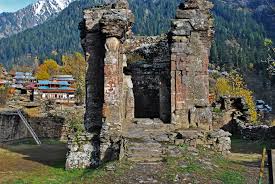 Sharada temple ruins in Kashmir
Sharada temple ruins in Kashmir
2. Vaishno Devi Temple, Jammu
Most Indians dream of a trek up the Trikuta Mountain to visit this famous cave temple of Mother Vaishno Devi. Because of the difficulties in climbing the slope and the cold weather for most of the year, a visit to Vaishno Devi is thought to be a difficult pilgrimage.
The cave temple contains three naturally-formed rock formations, that represent the three female divinities of Durga, Lakshmi and Saraswati, and stands on the top of the mountain. Literally, millions visit the ‘Mata Rani’ to ask for blessings through the year. The cave temple stands at the height of 5200 ft above sea level. The base town from where the yatra starts is Katra i.e. a couple of hours from Jammu. Some also visit the nine Devi temples of Himachal Pradesh, the key ones being Jwalamukhi and Chintapoorni.
To see pictures of Vaishnudevi Yatra http://www.esamskriti.com/photo-detail/Vaishnudevi.aspx
3. The famous Kali temple in Kolkata, West Bengal
The Kalighat area where this famous shrine stands is visited by millions through the year. Also in Bengal, Navaratri is celebrated with the greatest pomp and fervour in homes as well as public areas. In the huge pandals built for the festival, the traditional idol of Durga as Mahishasuramardini or destroyer of the demon Mahishasura is worshipped for nine auspicious days. Cultural programs of music and dance continue for nine nights. Then with great pageantry and celebration, the idol is taken to the nearest ocean or river for immersion.
Be it within or outside India any city with a sizeable population of Bengalis, Orissans, Biharis or people from any eastern state is sure to have a public Durgapuja.
4. The Kamakhya Temple in Guwahati, Assam
This temple is dedicated to the Mother Goddess Durga, called Kamakhya in Assam. This temple is one of the 52 Shakti Pithas. They are traditionally venerated abodes of the power goddesses. Standing on the Nilanchal Hill in the western part of Guwahati, the main shrine here is surrounded by smaller temples of other forms of the Mother Goddess. In the bygone centuries, this temple was considered a centre for Tantrik worship but today, it is a greatly visited shrine where the Mother Goddess is venerated and worshipped.
To see pictures of Kamakhya Mandir http://www.esamskriti.com/photo-detail/Kamakhya-Temple.aspx
5. Ambaji temple in Banaskanta district, Gujarat
It is one of the 52 Shakti Peethas of India. The nearest towns to the temple are Palanpur and Mount Abu. In the temple, there is reportedly no idol of a goddess. The beautiful, sacred Shrichakra, is a symbol of the female divine power and venerated as the chief deity in the temple. A vast number of devotees visit the temple every year on full moon days as a custom and esp. in the month of September.
The temple is illuminated at during Diwali. Ambaji is a popular pilgrim centre for all devotees of Amba Mata or Mother Amba. Indeed, the word Amba itself means Mother.
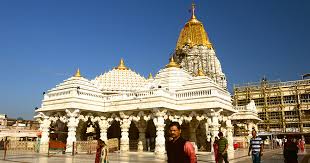 Ambaji Mandir
Ambaji Mandir
6. Chamundeshwari Temple on Chamundi Hills Mysore, Karnataka
The goddess Chamundi in Mysore is the family deity of the royals of Mysore and has been worshipped as the ruling deity of the city for centuries. Therefore Navaratri and Dussera are celebrated with great pomp and incredible grandeur in Mysore with a procession with the Maharaja leading the devotees to the temple to see the Goddess who is dressed with beautiful priceless jewellery and clothes during the nine days and nights. The goddess here is also counted among the 52 Shakti Peethas.
This beautiful temple is said to have been built in the 12th century by the Hoysala rulers of Karnataka. It has an impressive tower which was added by the Vijayanagar ruler Krishnadevaraya during his rule. A series of one thousand steps leads to the temple which stands at a height of 3,000 ft. There is huge granite Nandi three-quarters of the way up the steps and a Shiva temple. This Nandi is a great tourist attraction because he is over 15 feet high and 24 feet long! Around his neck are beautifully crafted bells that do not ring.
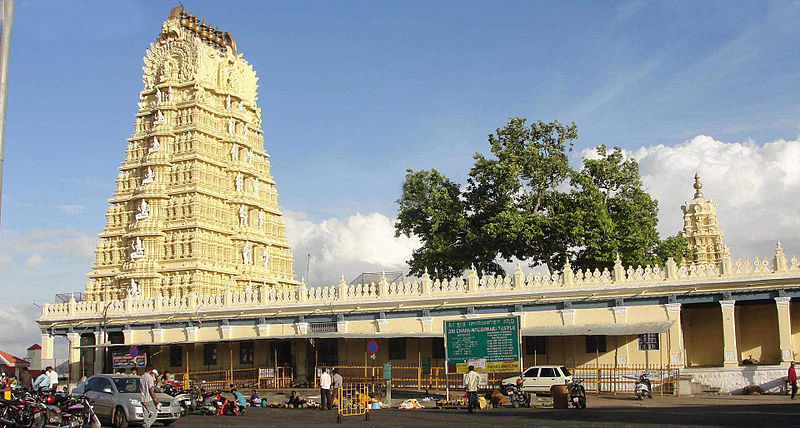 Chamundi Temple Mysore
Chamundi Temple Mysore
7. Meenakshi Temple Madurai, Tamil Nadu
It has interesting history. It stands on the banks of the Vaigai River in Madurai, a city known for the best of Tamil culture in terms of literature, spirituality and art. It also houses many other smaller temples which are unique examples of Tamil architecture. Meenakshi is the ruling deity of the temple and the entire city, as well as Tamil culture. Her consort Shiva is known as Sundereshwara in this temple. The temple, over centuries, has become the biggest attraction of the 2,500-year-old city of Madurai. It was built between 1623 and 1655 AD.
History says that, the Mughal Commander Malik Kafur attacked and looted the temple and took all the valuables away. Later it was rebuilt by Vishwanatha, a brave king of the Nayaka dynasty. This king made sure that the principles of building temples were scrupulously observed while reconstructing the temple. Thus, it has 14 towers called gopurams which are astounding in the very concept. The temple is known for the huge number of sculptures of the period – estimated to be more than 33,000 in number. Each of the sculptures is so unique that the temple was included in the list of the best 30 nominees for the list of the ‘New Seven Wonders of the World’.
The Meenakshi Tirukalyanam festival which is held in April-May each year draws huge crowds of devotees and tourists.
To see pictures of Meenakshi Mandir http://www.esamskriti.com/photo-detail/Meenakshi-Temple-Madurai.aspx
8. Kamakshi Temple Kanchipuram, Tamil Nadu
This exquisitely-designed temple is dedicated to Kamakshi, yet another name for the Mother Goddess. In fact, her name Kamakshi comes from the fact that she is very beautiful.
One of the Shakti Peethas, the Kamakshi temple, it is said, was built by the Pallava dynasty kings, whose capital was Kanchipuram. Kamakshi is again a form of the Mother goddess, In this temple, she holds a sugarcane bow and bouquet of flowers in the lower arms and has a lasso and an ankush or goad in her upper two arms. A parrot perches near the flower bunch. Kamakshi is the only temple of the Mother Goddess in this ancient city. The temple attracts large number of devotees and tourists.
Adi Shankaracharya, the great 8th-century (788-820 CE) scholar and spiritual reformer of India, re-established the famous Sri Chakra – a symbol of the female energy in the universe – in the Kamakshi temple which is specially venerated by devotees.
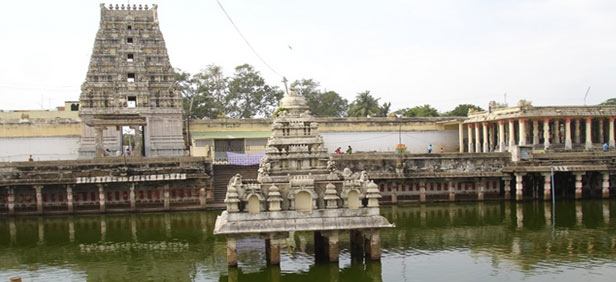 Kamakshi Temple Kanchipuram
Kamakshi Temple Kanchipuram
9. Mumba Devi Temple Mumbai, Maharashtra
The seven goddesses of Mumbai’s original seven islands.
When the British rulers first came to Mumbai, they began to call it Bombay and saw that the sea coast of the Arabian Sea had a clutch of seven small islands in the ocean. They shrewdly realised that if they could join them together, the island could make a fabulous port city for their trade. The seven islands were Colaba, Little Colaba, Mumbai, Worli, Parel, Mazgaon and Mahim.
Strangely, in a unique instance, these islands were gifted as dowry to the King of England by the Portuguese king who owned them. This gift was given when the daughter of the Portuguese king married the British monarch. As pointed out before, it was the British who saw the magnificent promise of these islands. They knew that if the islands could be joined to form a city, that city could be one of the world’s busiest ports for transport of goods and people. So in one of the world’s largest and most astounding sea-filling operations project, their engineers joined all of them to form today’s Bombay or Mumbai.
It is said that the Parsis of Mumbai – particularly Lady Jamshedji donated her jewellery to create the causeway that joined the islands to the mainland thus forming a city which was an excellent port and a link to the rich hinterland. The road is still called Lady Jamshedji Road. The project started in 1782 and was completed around the 1900s. The goddess Mumba Devi became known as the guardian deity of the magnificent new city.
The interesting fact also is that the seven islands, hitherto populated by fisher communities, had one protector goddess on each island, Mumba Devi being on the main island. Apart from this temple, there were Gamdevi, Prabhadevi, Shitaladevi, Kalbadevi, Taddevi and Mahalakshmi. These shrines exist even today and are venerated by the people of Mumbai.
The name of the city comes from the ruling deity of the islands Mumbadevi in the temple which stands on the main Mumbai Island. Even now, this temple stands in the same old area of the city in the vicinity of the gold and jewellery market area called Jhaveri Bazaar and is visited by hordes of people in the Navaratri festival.
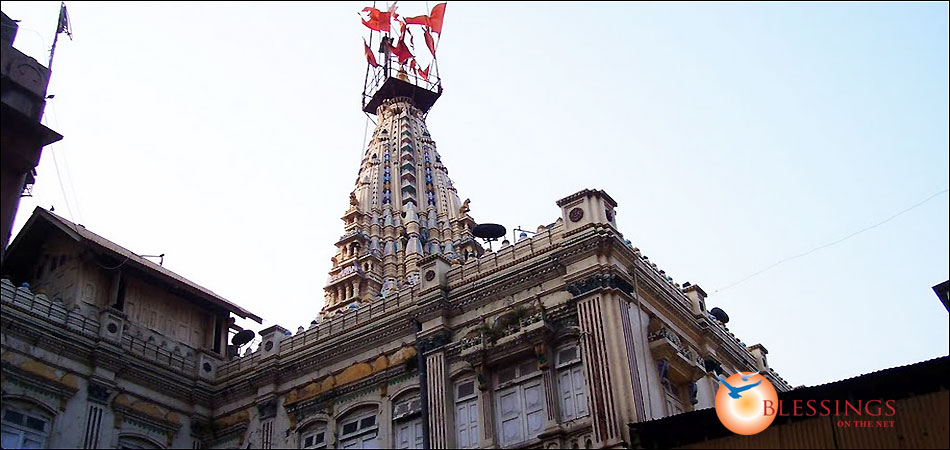 Mumbadevi Mandir Mumbai
Mumbadevi Mandir Mumbai
10. Ambabai Kolhapur, Maharashtra is a famous Shakti Peetha
The Mahalakshmi Temple in Kolhapur, Maharashtra, is famous as one of the 52 Shakti Peethas of India. It stands on the Panchaganga river which flows down the Sahyadri Mountains in this region. It is counted among the oldest temples of Devi, built in the 12th century by the Chalukya dynasty kings of peninsular India.
The temple is famous for its exquisite architecture and sculpture. The temple has four entrances which are called Maha Dwar according to the direction which they face. This temple also has shrines dedicated to Lord Athibaleshwar /Lord Shiva, Lord Vishnu, Lord Ganesha, Lord Vithal, and Lord Dattathreya.
The idol of the goddess has a beautiful presence. In her right hand, she holds a matulinga which is like a lemon, and in the left hand, she holds a large mace with its head touching the floor. The upper left hand holds the shield and the lower one holds a bowl. Standing behind the goddess is her ride – a lion. This Goddess is also called the Karvirvasini Mahalakshmi meaning Goddess whose abode is Kolhapur. Experts say that the idol is five to six thousand years old.
11. Tulja Bhavani Tuljapur, Maharashtra
In Osmanabad district of Maharashtra is Tulja Bhavani, one of the most famous temples of Devi, the mother goddess. It was this deity that Shivaji Maharaj worshipped whilst he built the foundations of the Maratha Empire. The climb to the temple, through the Balaghat Mountains, is arduous but thousands take this journey barefoot every Navaratri to pray to Tulja Bhavani who grants all the boons of a devotee. Indeed, the arduous walk is the penance which many devotees perform so that they receive the grace of the Mother Goddess.
The image of Bhavani in the sanctum is made of black stone and has eights arms. Close to the right shoulder, a moon is carved and on the left shoulder, there is a sun motif. All her arms carry a variety of weapons including a Trishula. Near her feet is the head of the Mahishasura, the demon whom the Goddess killed for the safety of the universe. Tulja Bhavani is an impressive temple with the architectural features which are centuries old. The temple has been visited by every VIP visiting Maharashtra and has gained a special place in the hearts of Maharashtrians because Raja Shivaji, the most venerated Maratha ruler of the South was her devotee and brought glory to her temple, which is today the pride of Maharashtra.
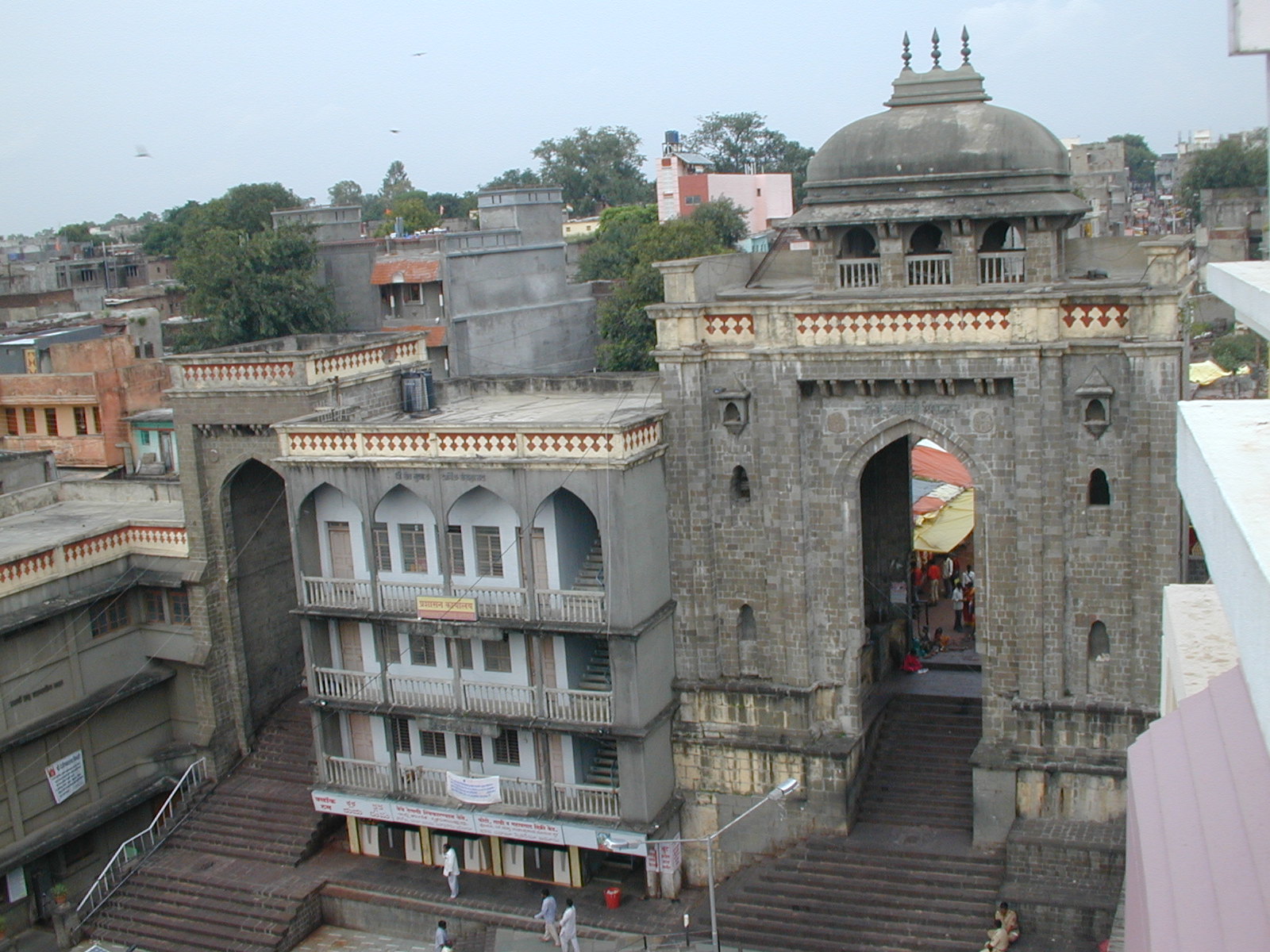 Tulja Bhavani in Tuljapur
Tulja Bhavani in Tuljapur
12. Saraswati in Bhoj Shala near Maihar, Madhya Pradesh
Bhojshala in Madhya Pradesh has the pride of housing one of most glorious temples of Saraswati. This temple was built by Raj Bhoj in 1034 A D. In days gone by, it also included a training institute for students and scholars presided by the deity of knowledge and education. However, several attacks beginning with 1305 AD overshadowed this institution and the present day Kamal Maulana Durgah was built near the Bhojshala. Ever since then, Bhojshala has become victim of arguments and controversies. Only on Tuesdays, Hindus can enter Bhojshala to pray and offer worship to Saraswati while Muslims can offer Namaz on Fridays. The government also allows worship on the Basant Panchami day each year in this temple.
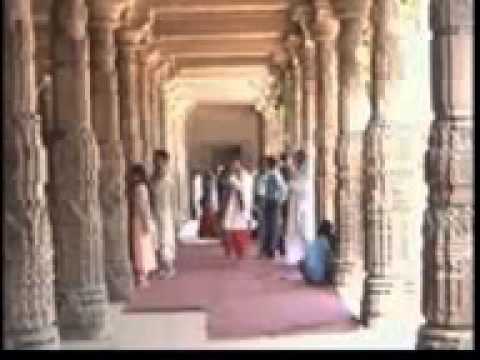 Bhojshala Saraswati Temple
Bhojshala Saraswati Temple
13. Shri Sharada Temple Sringeri, Karnataka
The Sharadamba Temple at Sringeri was founded by Adi Shankarcharya in the 8th century. It had originally, it is said, a sandalwood statue of Shardamba in a standing posture installed by Adi Shankarachaya. Later, the Vijayanagara rulers and the guru of the two rulers – Harihara and Bukka - installed a gold statue of Sharada in the 14th century at the temple.
A fable says that Shiva himself gave a crystal Linga called Chandramoulishwara to Adi Shankaracharya. This Linga can still be visited and worship is offered to the Linga. Sharada is another name for Goddess Saraswati, the goddess of learning, knowledge and patron of all arts. All children begin their education with a ritual worship of Sharada or Saraswati. Parents of young children pray to her so that their children receive the gift of knowledge.
Sringeri, the seat of Sharada has an interesting story. It is said that Sharada, a learned woman challenged Adi Shankaracharya for a discussion on the theories of the divine and was defeated. She thus became his disciple and followed him everywhere. Now Shankaracharya being a bachelor and sanyasi, did not want her to follow. So when they both arrived in Sringeri on the banks of the River Tunga, he asked her to wait on one shore while he checked out the other shore of the river for an ashram. He went and never came back.
So Sharada continues to wait on the shore of Tunga and is deified as a goddess of learning arts and knowledge. In the environs of the Sharada Peetham in Sringeri, there is a beautiful temple whose sculptures and architecture are unique. Earlier, travelers had to cross the river by wading or swimming but now there is a beautiful bridge over which cars can pass to go for the Darshan of the present Shankaracharya whose abode is on the other side of the river.
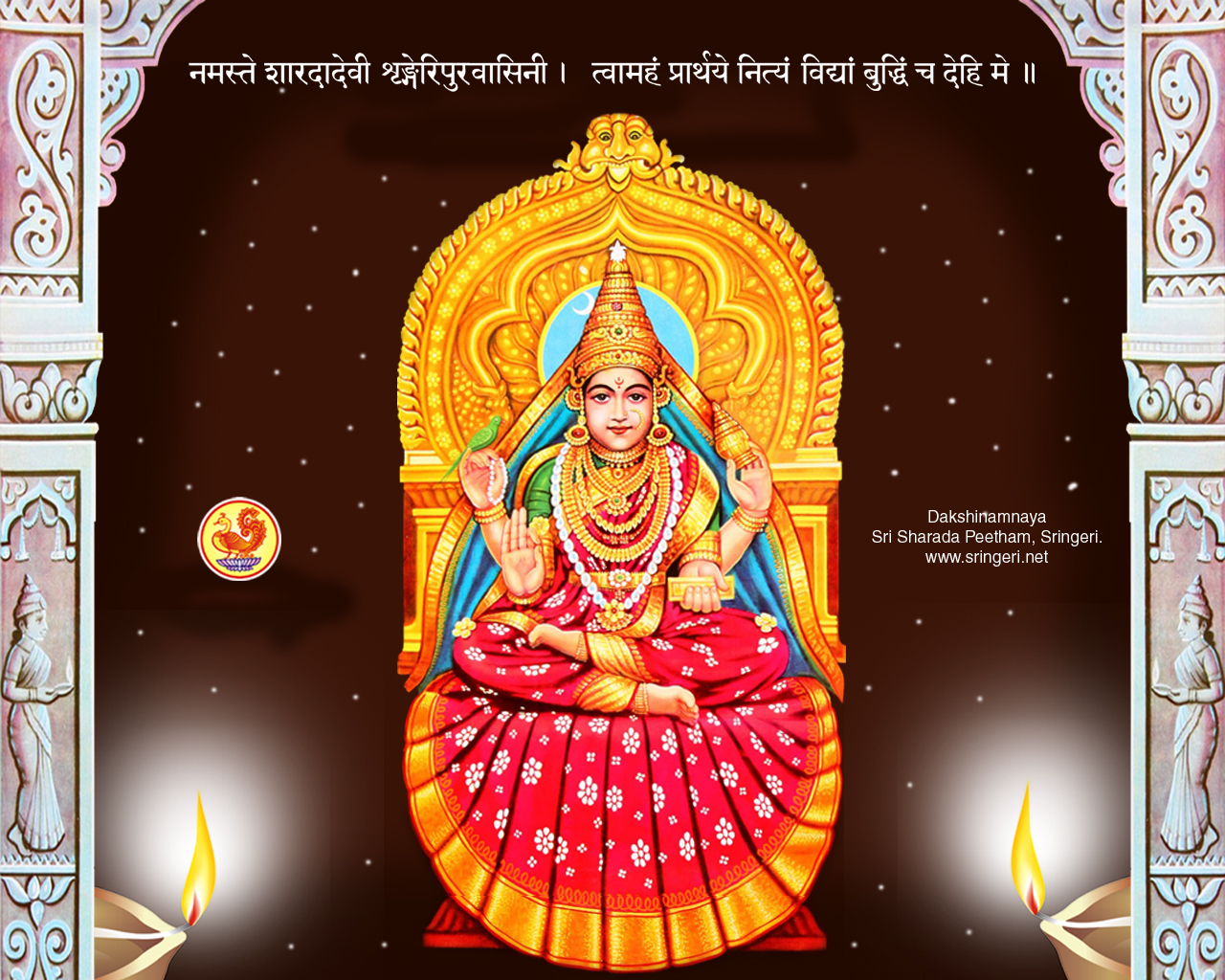 Shree Sharada Mandir
Shree Sharada Mandir
14. Shantadurga, Mahalakshmi and Mhalasa temples in Goa
Shantadurga is the most popular temple of Durga in Goa. Shantadurga was earlier worshipped as Santeri, a popular mother goddess in Goa. Goan temples of Mahalakshmi, Mangesha, Ramnath, Mhalasa and Shantadurga have a special place in India. They are the family deities of thousands of Saraswats who lived in Goa after their exodus from Kashmir. Fable says that they brought their deities – among them Durga in her form as Shantadurga – to this verdant coastal area of India and settled here peacefully.
But again under Portuguese rule, they had to leave and come away to other coastal areas of West India. However, even today, no Saraswat wedding or ritual is complete without the worship of and visit to the family deity, whose main temple is in Goa.
Of all such temples in Goa, Mangesh-Mahalakshmi and Shantadurga are the most popular and perhaps the most ornate in their architecture and iconography. These two temples have their own festive days, special worship days and followers throng in thousands to worship the deities. In a Saraswat marriage, it is customary for the newly married couple to visit their family deity in Goa soon after the nuptials. Like other Goa temples, Shantadurga also has a main temple and a huge man-made lake nearby. The area of the temple is huge and the structures around contain a room for musicians and rooms for visitors to stay. Built along the same plan, the Mahalakshmi and Mhalsa temples also have other forms of the same Goddess Durga.
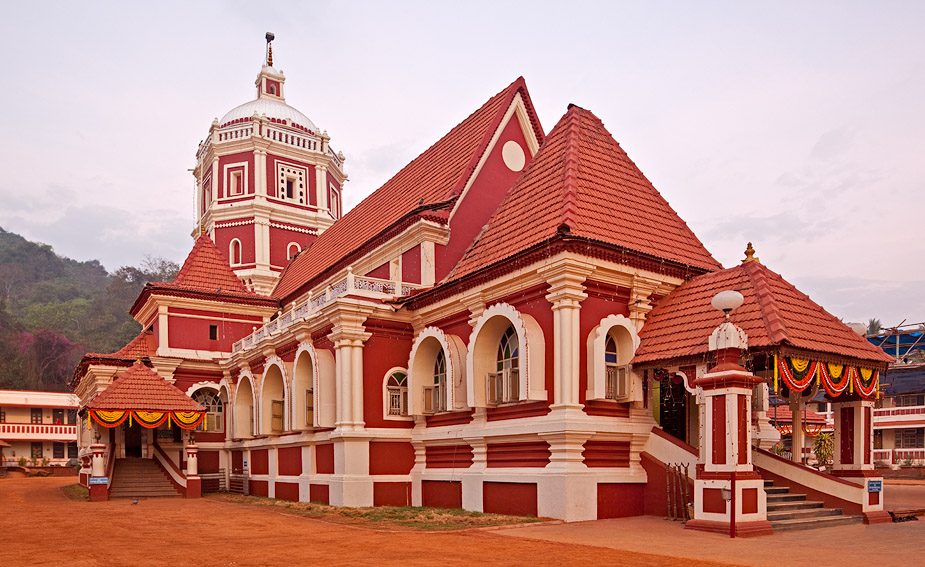 Shree Shantadurga Mandir
Shree Shantadurga Mandir
15. Kanyakumari at the southern tip of India
The goddess who stands at the tip of the Indian peninsula is called Kanya Kumari because she is an adolescent young girl. She is also called Bhagwati as she is another form of the Goddess Durga.
The temple is located in Cape Comorin or Kanya Kumari in Tamil Nadu the southern tip of peninsular India. The temple is thus based at the confluence of the Bay of Bengal, the Indian Ocean and the Arabian Sea. The Goddess is beautiful in her presence and there is an atmosphere of peace and tranquility around her. This temple too, was renovated and re-established by Adi Shankarachara to whom a temple is dedicated.
From here, pilgrims cross over to the Vivekananda Rock across on an island and the view of India from the island is fabulous indeed. She is considered one of the most powerful deities in India and one of the 52 Shakti Peethas of India.
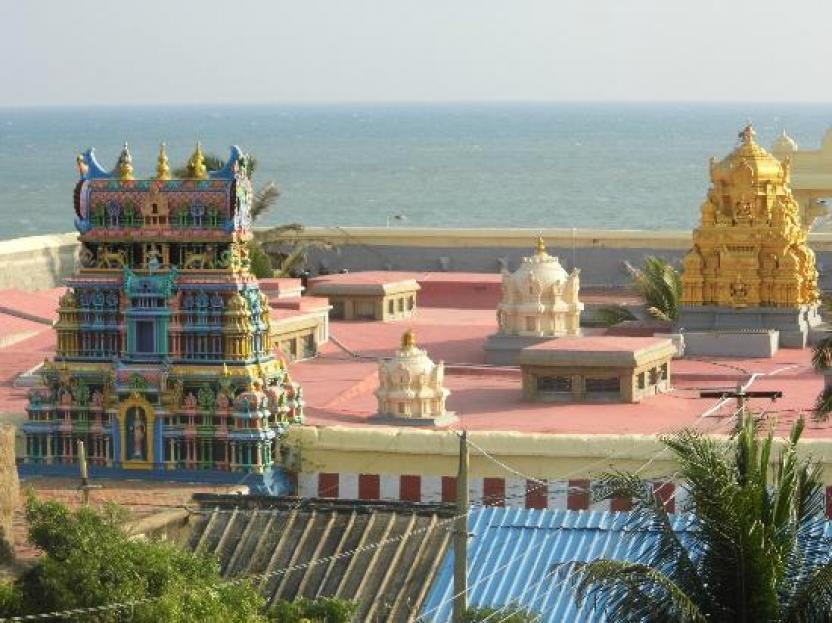 Kanyakumari
Kanyakumari
It must be clearly remembered that this is a small list of Devi temples in India. Every city and village has a guardian goddess – all being forms of one of the three main powers namely Lakshmi, Saraswati and Durga. Lakshmi is the essence of opulence, beauty, generosity, plenitude, auspiciousness and lustre. Saraswati is the deity of knowledge, wisdom, arts and a search for self realization and the true reason for life and living. Durga is the goddess of power, motherhood. protection, nurturing and gentleness. She also fights demons of ignorance, injustice and can be ferocious while fighting evil.
All three Shaktis or energies are the aspects of one divinity only.
It would not be an exaggeration to say that India is a worshipper of the female energy of the universe more than any other nation in the world. Every village in India has a protector deity who is almost always a female goddess and a folk form of Durga…